Faishana Pure Handloom Katan Silk Pista Green Jangla Meenakari with Kadhwa Border and Pista Blouse Banarasi Saree
Faishana Pure Handloom Katan Silk Pista Green Jangla Meenakari with Kadhwa Border and Pista Blouse Banarasi Saree
SKU:PURESILK_12 AB
Couldn't load pickup availability
Low stock: 1 left
Faishana presents an exquisite Banarasi saree in pure silk handloom Katan, featuring a lush pistachio green hue. Adorned with intricate Jangla Meenakari floral designs and a detailed Kadhwa border, this saree exemplifies traditional craftsmanship. Accompanied by a matching Pista Green Kadhwa Meenakari blouse, this ensemble is a perfect blend of elegance and cultural heritage, ideal for special occasions.
This exquisite saree is available at the Faishana store, located at Mint House Nadesar, Andhrapul, and can also be purchased online through their website [www.faishana.in](http://www.faishana.in).
A Pure Handloom Katan Silk Jangla Minakari Jaal Banarasi Saree is a traditional and luxurious type of saree originating from Banaras (Varanasi), India. Let's break down its components:
1. Pure Handloom: This indicates that the saree is handwoven, not machine-made. Handloom weaving is a traditional craft in India, known for its intricate patterns and craftsmanship.
2. Katan Silk: Katan is a type of silk commonly used in Banarasi sarees. It is known for its smooth texture and fine finish, making it highly prized.
3. Jangla: Jangla refers to a specific type of intricate weaving pattern used in Banarasi sarees. It typically involves small, intricate motifs woven all over the saree, creating a rich and textured appearance.
4. Minakari: Minakari or Meenakari refers to the art of enameling metal surfaces with vibrant colors. In the context of this saree, Minakari Jaal likely refers to a pattern or design that incorporates these colorful enameling techniques, possibly in the form of intricate motifs or borders.
5. Jaal: Jaal means a net or lattice-like pattern. In Banarasi sarees, Jaal typically refers to a large, elaborate pattern woven into the fabric, often covering a significant portion of the saree's surface.
6. Banarasi Saree: Banarasi sarees are renowned for their rich silk fabric, intricate weaving patterns, and often incorporate motifs inspired by Mughal art and culture. They are known for their opulence and are considered one of the finest saree types in India.
In summary, a Pure Handloom Katan Silk Jangla Minakari Jaal Banarasi Saree combines the traditional craftsmanship of handloom weaving with intricate designs like Jangla and Jaal, along with the artistic elements of Minakari enameling. It represents a blend of fine silk, elaborate patterns, and cultural heritage from Banaras, making it a prized possession and a symbol of Indian textile artistry.
Buying a Pure Katan Silk Kadhua Banarasi Saree is often considered a special choice for several reasons:
1. Traditional Craftsmanship: These sarees are meticulously handwoven by skilled artisans using traditional techniques that have been passed down through generations. Each saree represents hours of labor-intensive work, showcasing the rich cultural heritage of Indian handloom weaving.
2. Luxurious Silk: Katan silk is known for its luxurious texture and sheen. It is a high-quality silk fabric that drapes elegantly and feels smooth against the skin, making it comfortable to wear.
3. Intricate Designs: Kadhua refers to a weaving technique where motifs are handwoven into the saree using small individual threads. This results in elaborate patterns and designs that stand out prominently on the fabric. These motifs often include floral patterns, paisleys, or intricate borders, adding to the saree's beauty.
4. Versatility: Banarasi sarees, especially those made from pure Katan silk, are versatile and suitable for various occasions. They are often worn at weddings, festivals, and other special events due to their grandeur and elegance.
5. Cultural Significance: Owning a Banarasi saree is like owning a piece of India's cultural heritage. Banarasi sarees have a rich history dating back centuries, and they continue to be highly prized for their craftsmanship and artistry.
6. Timeless Appeal: These sarees are timeless classics that never go out of style. They are considered heirloom pieces that can be passed down through generations, symbolizing tradition, grace, and beauty.
7. Supporting Artisans: By purchasing a Pure Katan Silk Kadhua Banarasi Saree, you are supporting traditional craftsmanship and helping to sustain the livelihoods of skilled artisans who dedicate their lives to preserving this art form.
In essence, buying a Pure Katan Silk Kadhua Banarasi Saree is not just about acquiring a piece of clothing but also about appreciating and contributing to a centuries-old craft that embodies the essence of Indian cultural heritage and craftsmanship.
Katan silk fabric is made from pure silk yarns that are twisted together to create a dense, strong, and fine fabric. Here's a step-by-step explanation of how Katan silk fabric is typically made:
1. Silk Filament Extraction: The process starts with extracting silk filaments from silkworm cocoons. These cocoons are collected and the silk filaments are carefully unwound, usually through a process called reeling.
2. Twisting the Yarns: The extracted silk filaments are twisted together to form silk yarns. In the case of Katan silk, these yarns are typically twisted tightly to create a strong and durable thread. This twisting process also contributes to the smooth texture and sheen characteristic of silk fabric.
3. Weaving: The twisted silk yarns are then woven on a handloom or power loom to create the Katan silk fabric. Katan silk is known for its plain weave structure, where the warp (lengthwise yarns) and weft (crosswise yarns) are interlaced in a simple over-under pattern. This weave structure enhances the fabric's strength and durability.
4. Finishing: After weaving, the Katan silk fabric undergoes finishing processes such as washing, bleaching, dyeing (if colored fabric is desired), and sometimes additional treatments to enhance its luster or texture. These finishing processes ensure the fabric is ready for use in making garments like sarees, dupattas, or other silk products
Key characteristics of Katan silk fabric include its smooth texture, lightweight feel, natural sheen, and ability to drape beautifully. It is highly valued for its quality, making it a popular choice for traditional Indian garments like Banarasi sarees and other luxurious textiles.
A pure handloom Katan silk Banarasi saree is made using a traditional handloom rather than a machine. The process of weaving such sarees involves skilled artisans manually operating the loom to create intricate patterns and designs. Here are some key points about the handloom used in making Katan silk Banarasi sarees:
1. Handloom Basics: A handloom is a manually operated loom used for weaving textiles. It consists of a frame or structure where warp (lengthwise threads) and weft (crosswise threads) yarns are interlaced to create fabric.
2. Traditional Setup: The handloom used for Katan silk Banarasi sarees is typically set up in a specific manner to accommodate the specific requirements of weaving silk yarns. It involves mounting the warp threads vertically and adjusting them for proper tension.
3. Weaving Techniques: Skilled weavers use traditional techniques to weave the saree fabric. This includes manually inserting the weft yarns across the warp threads, beating them into place using a ‘beater’ (a comb-like tool), and carefully adjusting the tension to ensure uniform weaving.
4. Design and Pattern Creation: For Katan silk Banarasi sarees, traditional designs and patterns are often incorporated directly into the weaving process. This can include intricate motifs, borders, and pallus that are characteristic of Banarasi sarees. Some sarees may also feature Kadhua weaving, where each motif is woven individually by hand.
5. Artisanal Skill: The entire process of weaving a Katan silk Banarasi saree on a handloom requires significant skill, experience, and attention to detail. Each saree is a testament to the craftsmanship and heritage of handloom weaving in India.
In summary, pure handloom Katan silk Banarasi sarees are crafted using traditional handlooms operated manually by skilled artisans. This meticulous process ensures the high quality, durability, and artistic beauty that these sarees are renowned for.
The Minakari Jaal pattern refers to a specific type of intricate design or motif created using the Minakari (or Meenakari) technique. Minakari itself is the art of decorating metal surfaces with colorful enamels, often seen in jewelry and sometimes adapted for textiles like sarees. Here’s a breakdown of what the Minakari Jaal pattern typically involves:
1. Enamel Work: Minakari involves applying vibrant colored enamels to metal surfaces, traditionally on materials like gold, silver, or copper. In the context of textiles, this technique is adapted to silk sarees, particularly those like Banarasi sarees.
2. Intricate Design: The Minakari Jaal pattern features intricate and repetitive designs that cover the fabric in a continuous motif. This pattern often includes floral motifs, paisleys, intricate geometric shapes, or elaborate vines.
3. Color Palette: The Minakari technique uses a rich and varied color palette. Traditional colors such as deep reds, blues, greens, and gold are commonly used to create a striking contrast against the base fabric, which is often silk.
4. Artistic Detailing: The Minakari Jaal pattern requires skilled craftsmanship to ensure precision in applying the enamel colors and creating a seamless pattern across the fabric. Each motif is carefully crafted to maintain symmetry and aesthetic appeal.
5. Cultural Significance: Historically, Minakari has roots in Persian and Mughal art forms and has been adapted into Indian craftsmanship, particularly in regions like Rajasthan and Gujarat. It adds a touch of cultural heritage and regal elegance to textiles like sarees.
In summary, the Minakari Jaal pattern is characterized by its detailed and repetitive enamel designs that adorn the fabric, creating a luxurious and ornate look. This technique enhances the beauty and richness of textiles like silk sarees, making them prized for their artistic craftsmanship and cultural significance.
Taking care of a pure handwoven Katan silk saree requires gentle handling to preserve its delicate fibers and intricate weaving. Here are some tips on how to wash and care for your Katan silk saree:
Washing:
1. Check for Color Fastness: Before washing, check if the saree is colorfast by testing a small, inconspicuous area with water.
2. Spot Cleaning: If there are only minor stains, spot clean the affected areas using a mild detergent and cold water. Gently dab the stain with a soft cloth or sponge.
3. Hand Washing:
- Fill a basin with cold water and add a gentle detergent suitable for silk.
- Submerge the saree in the water and gently swirl it around. Avoid scrubbing or wringing the fabric, as this can damage the delicate fibers and weaving.
- Let the saree soak for 5-10 minutes to loosen any dirt or residues.
- Rinse the saree thoroughly with cold water until the water runs clear and all detergent is removed.
4. Avoid Agitation: Do not twist or wring the saree. Instead, gently squeeze out excess water by pressing it against the basin or between clean towels.
Drying:
5. Flat Drying: Lay the saree flat on a clean towel or drying rack to air dry. Avoid hanging the saree when wet, as this can distort its shape and strain the delicate fibers.
6. Avoid Direct Sunlight: Keep the saree away from direct sunlight to prevent color fading. Instead, dry it in a shaded area with good air circulation.
Ironing:
7. Low Heat Ironing: Once dry, iron the saree on a low heat setting (silk or low temperature) to remove wrinkles. Place a thin cotton cloth over the saree to protect it from direct heat.
Storage:
8. Fold Properly: Store the saree folded neatly in a cotton or muslin cloth to allow the fabric to breathe and prevent creases.
Additional Tips:
- Dry Cleaning: For intricate or heavily embellished Katan silk sarees, consider dry cleaning to maintain their quality and avoid potential damage.
- Avoid Harsh Chemicals: Never use bleach or harsh detergents on Katan silk sarees, as they can damage the fibers and affect the color.
- Handle with Care: When wearing the saree, be mindful of sharp jewelry or accessories that can snag the delicate fabric.
By following these care instructions, you can ensure that your pure handwoven Katan silk saree retains its beauty, durability, and elegance for years to come.
Note:- To enhance customer satisfaction, Faishana offers video call facilities and can share videos and images of their sarees directly with customers via WhatsApp at +91-8808321678 and +91-7654321678. This Product is handwoven, there may be some minor irregularities that are a characteristic feature of genuine handmade products but that makes a woven saree unique. We pledge to cease child labor. This product ships worldwide.
Brand Name:- Faishana Belong To Banaras By Powertech Infraenergy Pvt Ltd
Product Dimension:- Saree Length:- 5.5 Mtrs, Unstitched Blouse Length:- 0.80 Mtrs (attached)
Fall & Pico:- Extra Rs. 350/-
Tassels:- We take no charges for adding tassels to the sarees but it takes 2 to 4 days to make your product ready with tassels
Manufactured & Marketed By:- M/s Powertech Infraenergy Private Limited
Country of Origin:- India
Mint House Store:- M/S Powertech Infraenergy Pvt Ltd, S 19/7-X-3, Varuna Bridge, Mint House, Nadesar, Varanasi, Uttar Pradesh-221002, India Contact No:- +91-7654321678, +91-8808321678
Andhrapul Store:- M/S Powertech Infraenergy Pvt Ltd, S 14/ 18-1 KH-1K, 1st Floor, Raniya Mahal, Andhrapul, Teliyabagh, Varanasi, Uttar Pradesh-221002, India Contact No:- +91-7654321678, +91-8808321678
Disclaimer:- Benares, now known as Varanasi, is the oldest continuously inhabited city globally, located in India. Its original name, Kashi, is derived from the Sanskrit words meaning "Light" or "Enlightenment." Varanasi is renowned for its skilled handloom weavers who create intricate designs on fabrics. These designs are unique to their tradition and incorporate intricate floral and foliate motifs.
Assured Quality
Assured Quality
Our products consist of good quality raw materials used, which assures you of the desired quality product.
Ready to Ship
Ready to Ship
Expertly Cross-Checked Products Ready to Ship from Our Warehouse.
Exchange & Returns
Exchange & Returns
Shop with confidence! We take customer satisfaction seriously. That's why we offer a 3-day, hassle-free return policy. No worries if something isn't quite right. Simply bring it back in its original packaging within 5 days, and we'll happily exchange it for something you love or give you store credit for a future purchase. The choice is yours! For complete details, check out our return policy. But for now, happy shopping!
Share
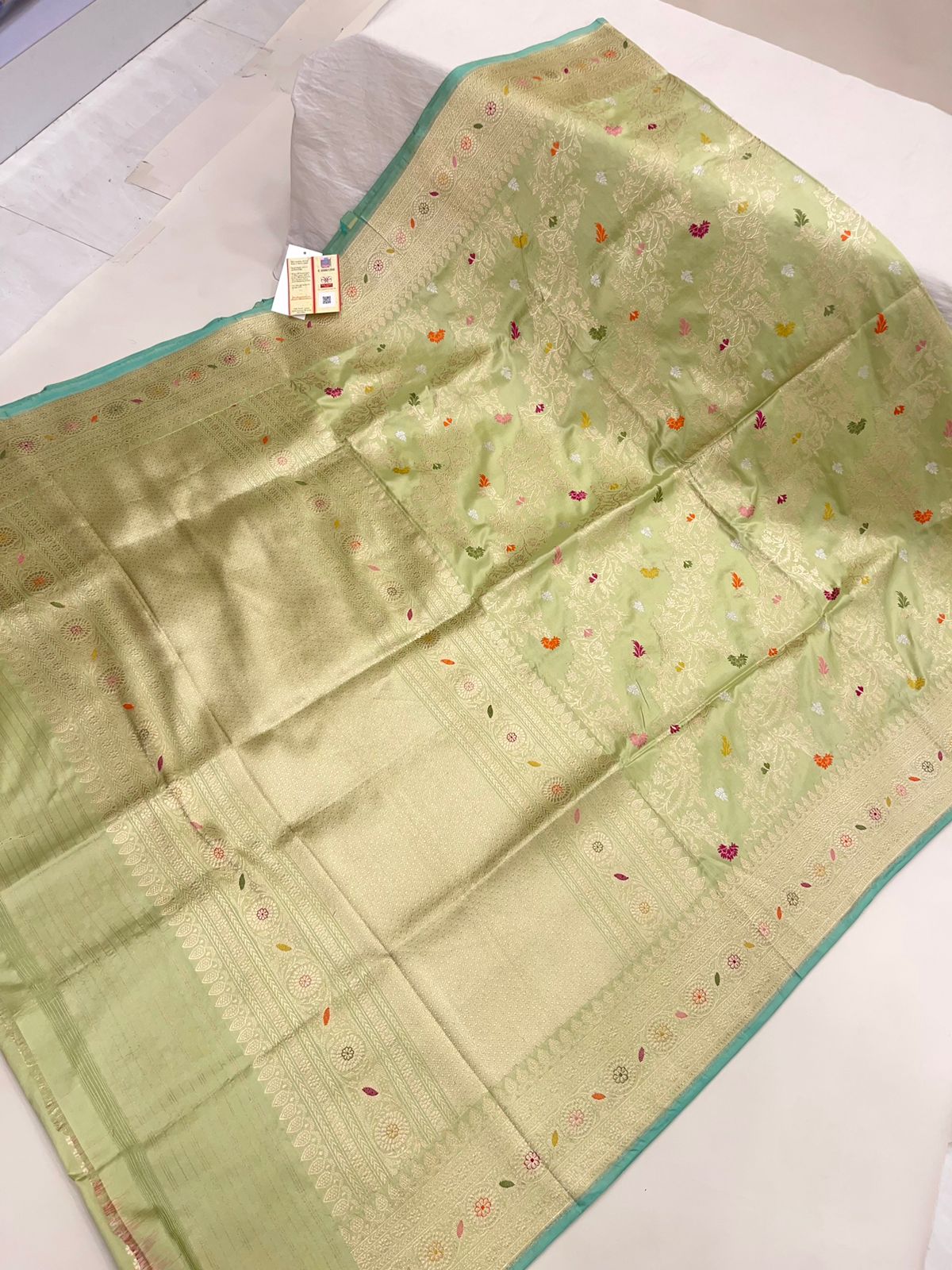
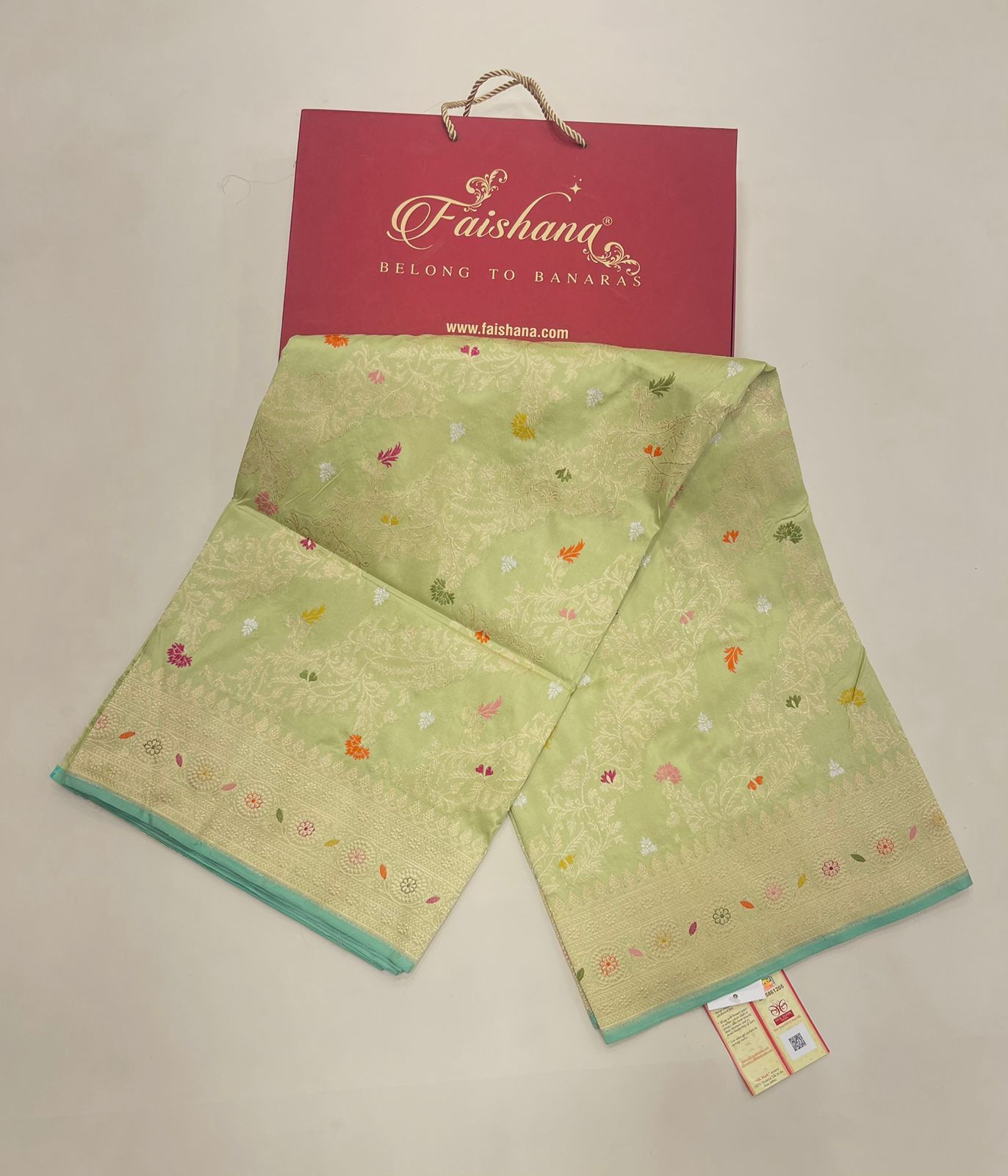

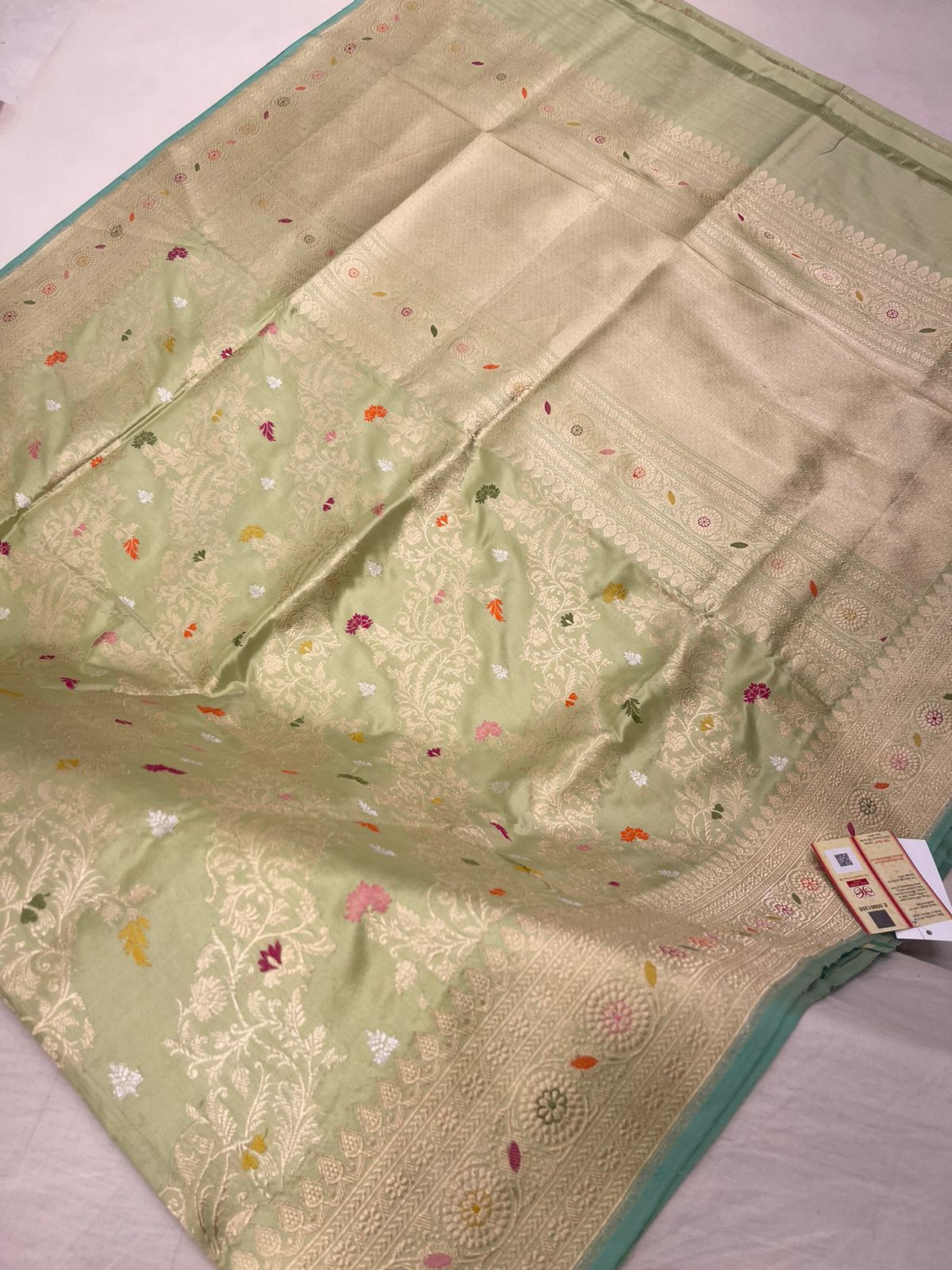


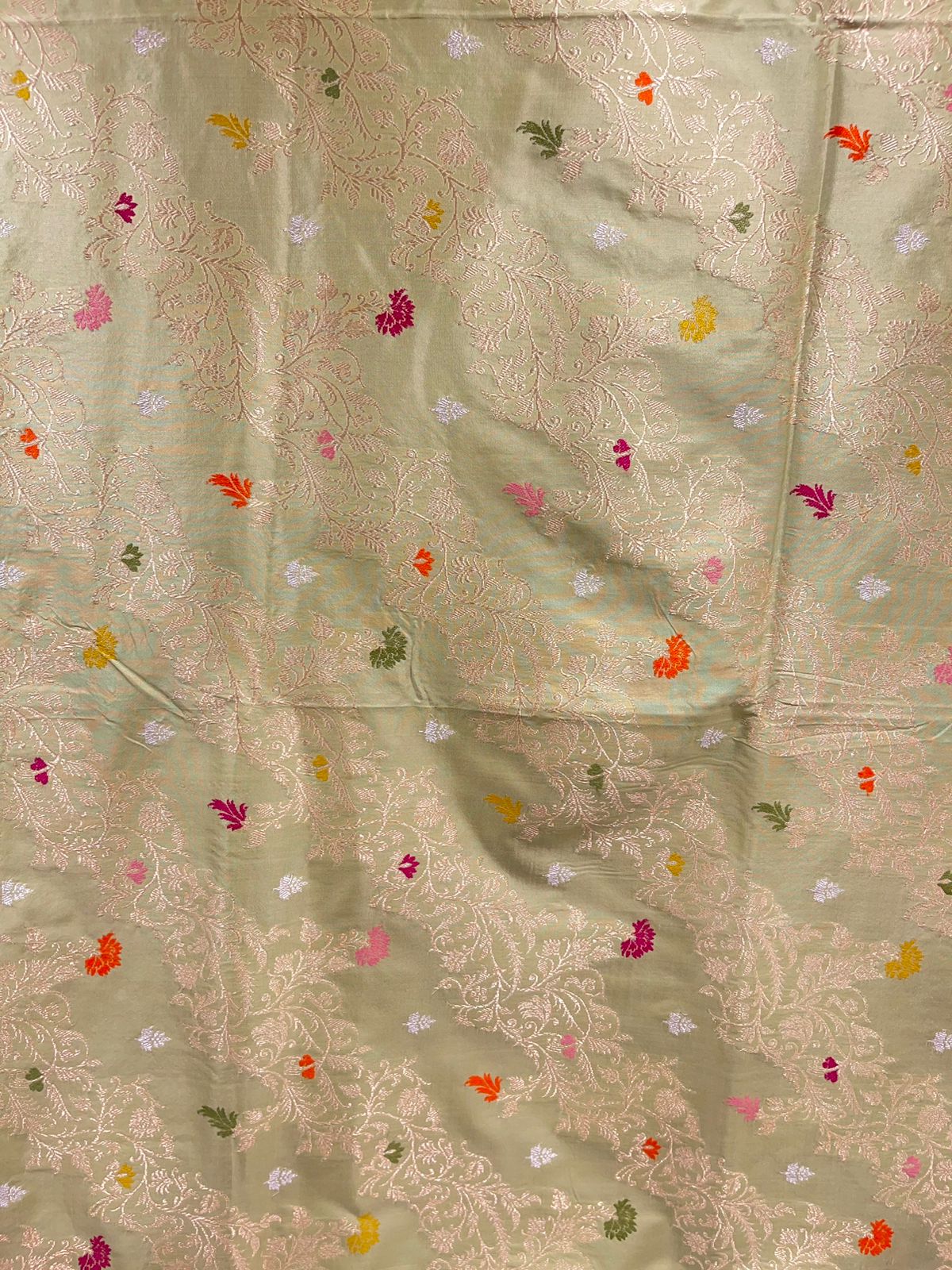
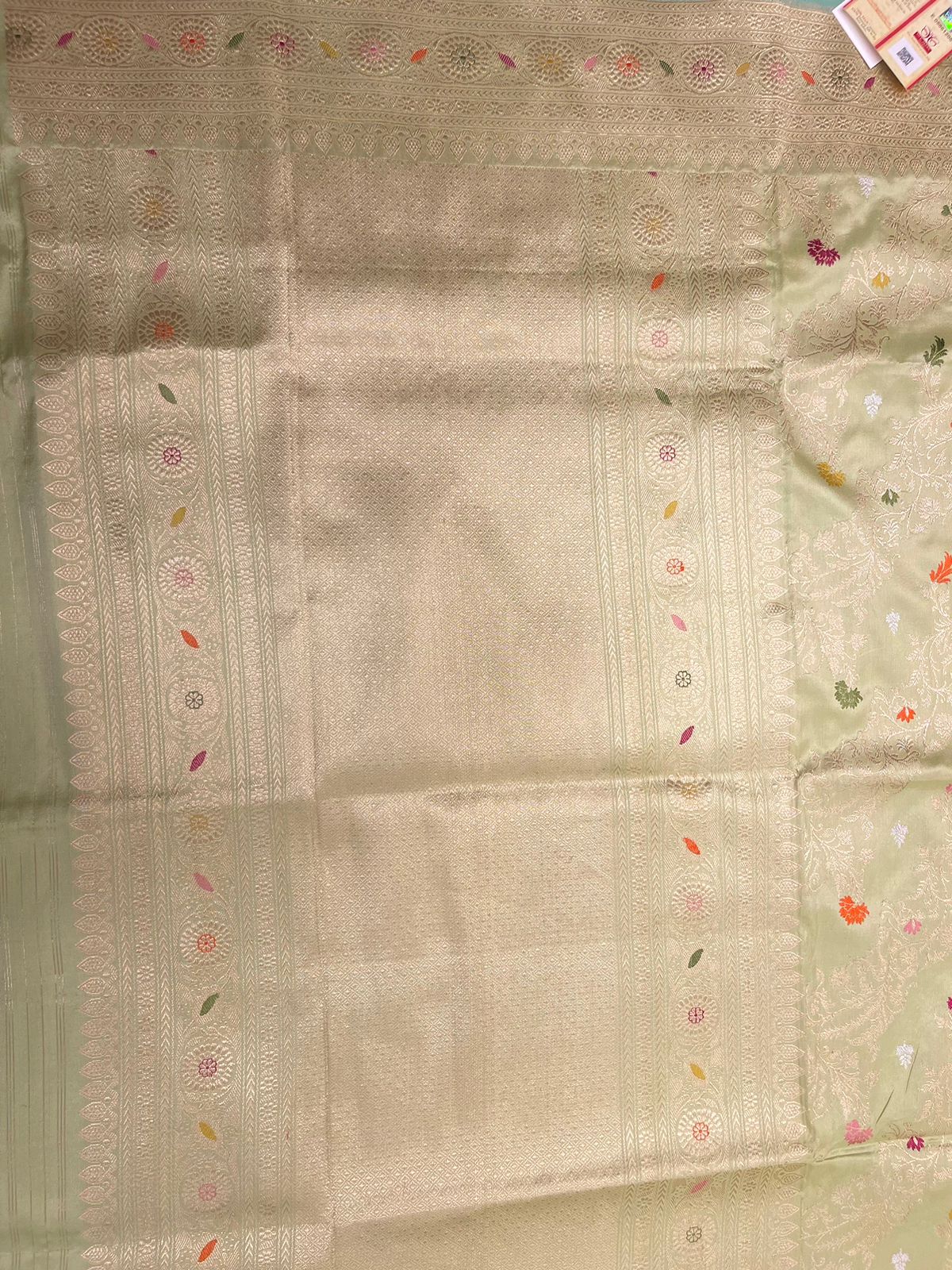
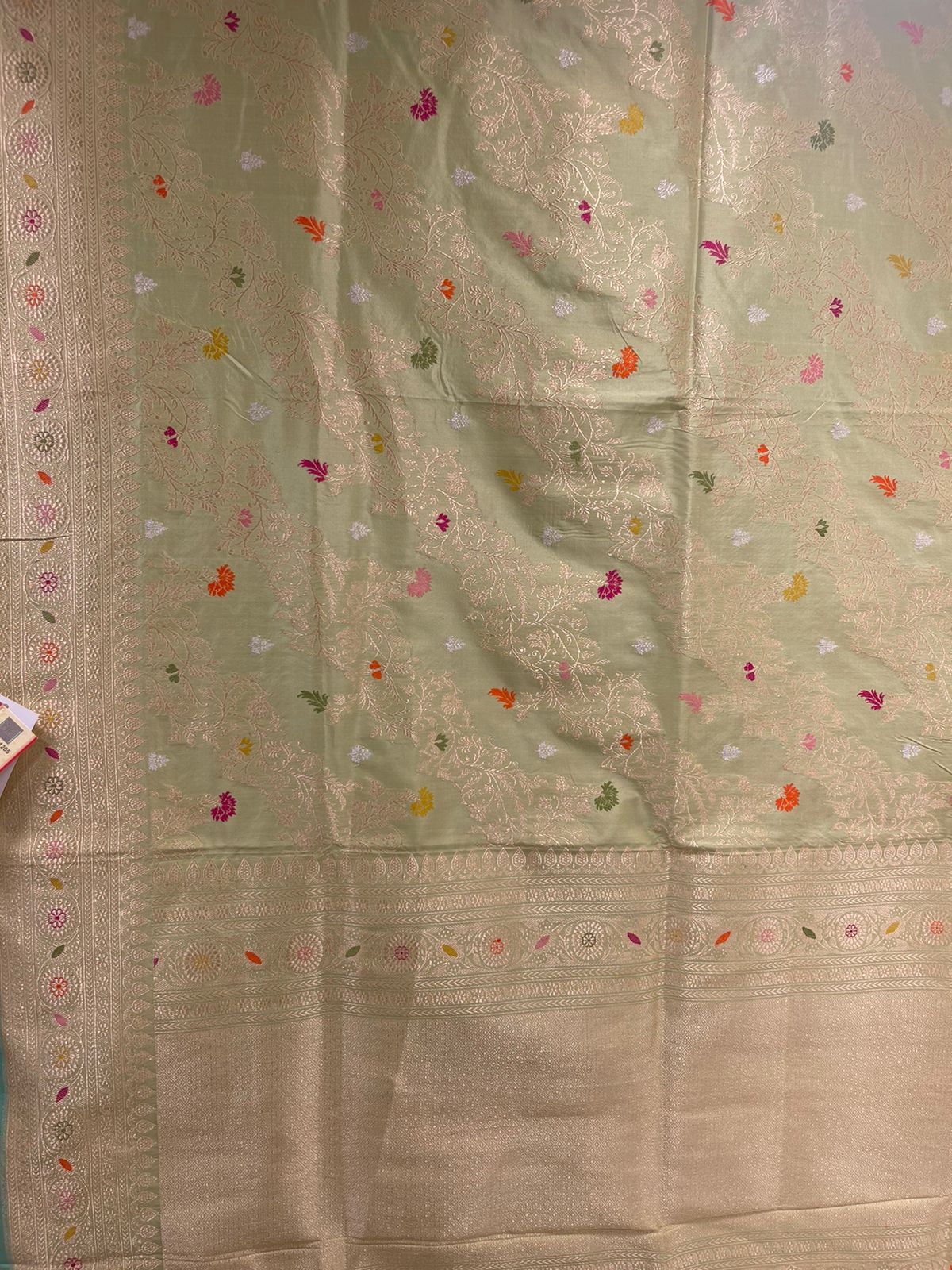
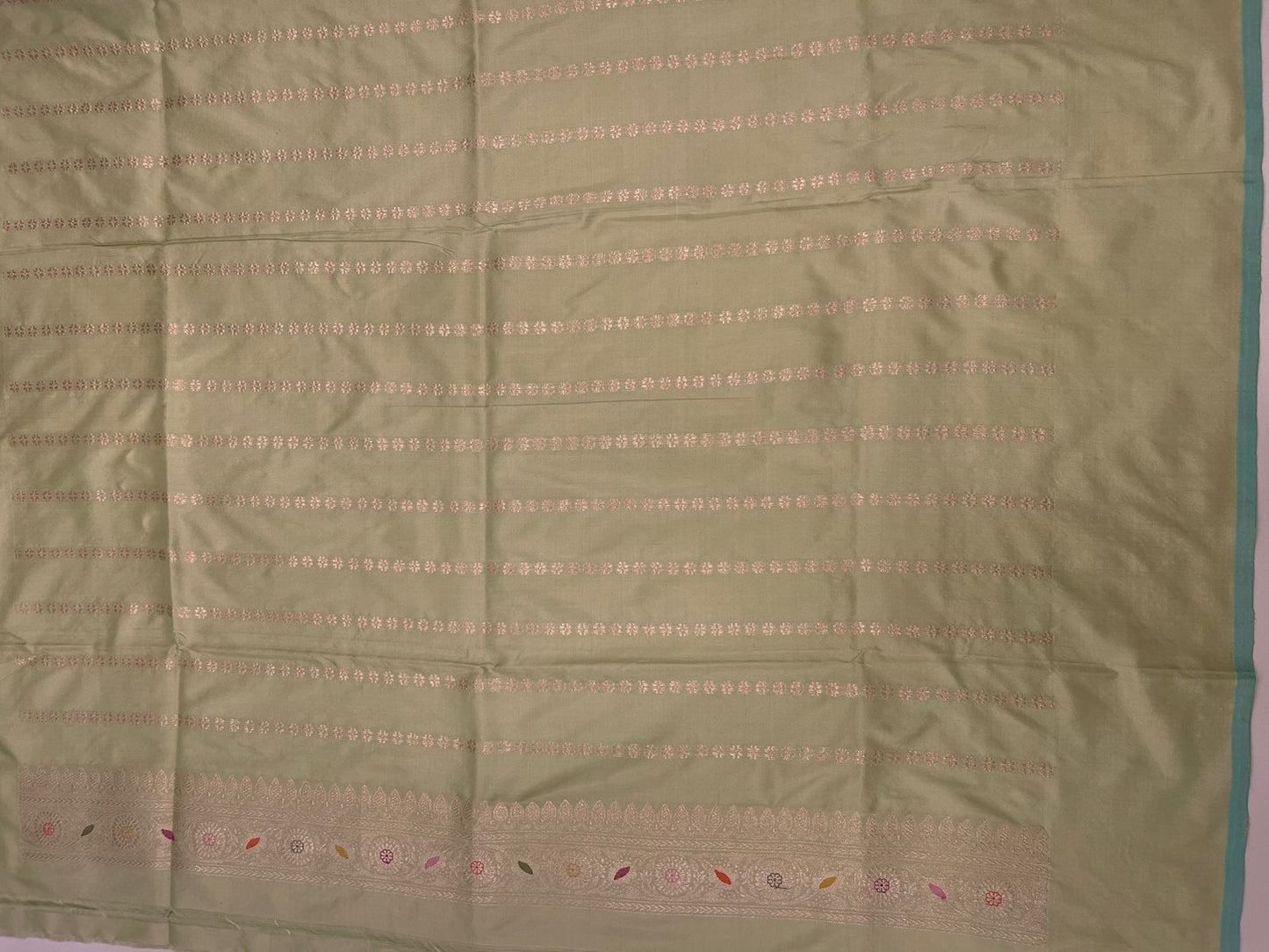
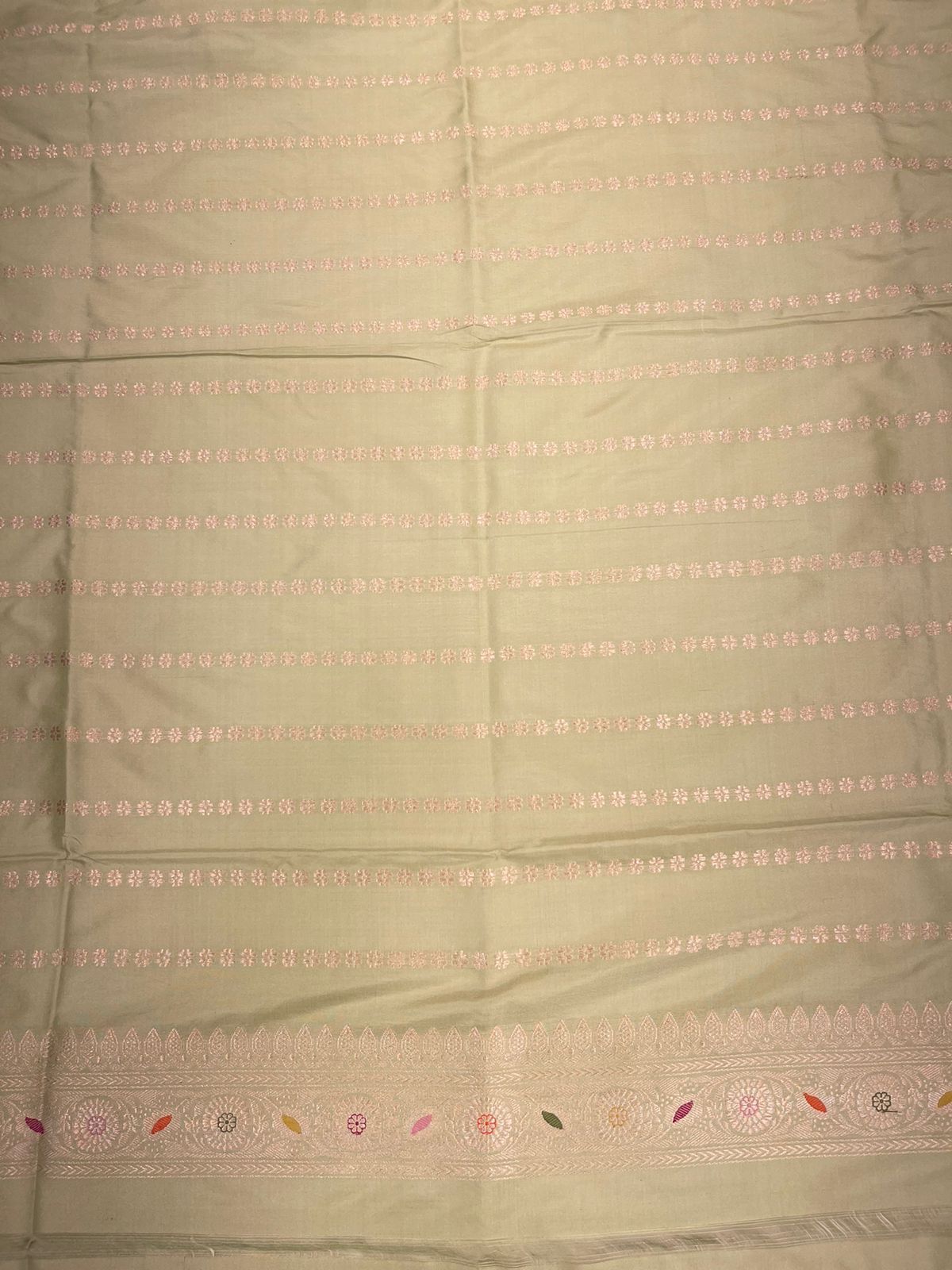

100% Authentic Products | 100% Secure Payments
Elevate your living space with the luxurious touch of our handcrafted artifacts and woven products. Experience the essence of craftsmanship.











